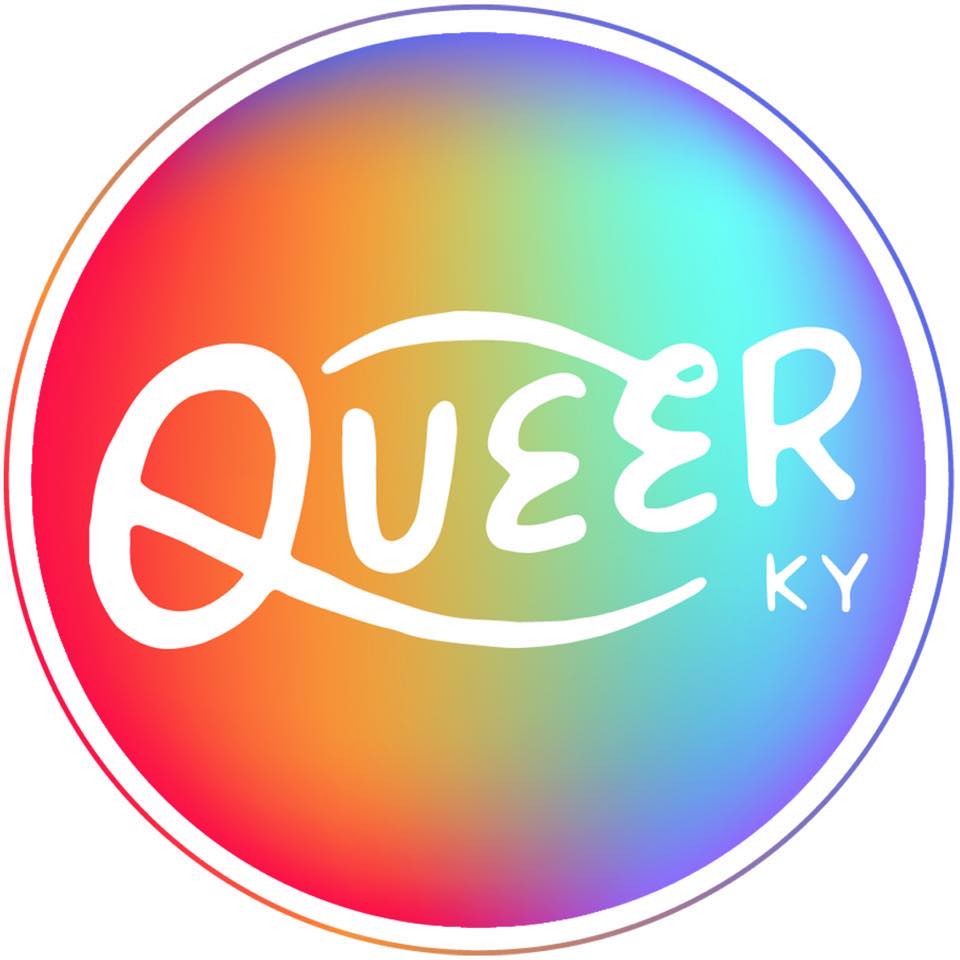

ABOVE: Beth Holladay, Don't Carry It All (2018), hand-cut paper collage
Expats, Part Two: Interviews with Former Louisville Artists
Q&A
with Kevin Warth
In the first part of this series (which you can read here), I spoke with four artists who each have diverse ways in which Louisville’s art community has affected their lives. Elaborating on the previous conversations, I asked three more artists to reflect on their time in Louisville.
Beth Holladay
Where do you currently live?
Baltimore, Maryland
Tell me about your practice.
I collect and meticulously hand-cut images from early 20th century ephemera in order to revise, combine, and defy them. Isolated and decontextualized, these artifacts of the past become something both fresh and familiar. I create large site-specific collages, book covers and illustrations, and zines.
How has living in Louisville impacted your work or career?
I moved to Louisville in 2006 as a newly-graduated graphic designer, and newlywed 22 year old. I immediately started my first full-time job at Preston Arts Center, and count myself as lucky to have been in a place where practicing graphic design, teaching art classes, and serving artists were all part of my getting to know Louisville and myself. I received a second education in art materials, took painting classes from Emily Skiles and Wini Harrison, and formed lifelong friendships with my Prestons family.
In 2012, I enrolled in an Art Education masters program at UofL with the conviction that my various art-centered experiences could equip me to impact high school students as a public school teacher. At UofL, I was fortunate to meet Mary Carothers (photographer/installation artist/genius) and with her encouragement traveled to Berlin to study contemporary art making and curatorial practice with John Begley.
In 2014, I took the position of art teacher at the Academy at Shawnee - a choice influenced by reading Our Shawnee (Louisville Story Program), which led me to profoundly demanding and meaningful experiences. I maintained a limited studio practice while devoting myself to a school whose challenges included the trauma of community violence, generational poverty and homelessness. I saw the role of art education as critically important to transforming and empowering the lives of my students. I met teenage artists with so much passion, creativity and drive, it inspired me and kept me going. I fell in love with my students and they became my family. I met community partners who helped to create opportunities for students to explore careers in the arts. I also experienced the pain of losing students to gun violence, the instability and constant turnover of staff and leadership, and my own anxiety, depression, and sheer exhaustion.
I reluctantly left Louisville and followed my spouse to Baltimore, Maryland in 2017. The choice to leave was wrought with heartache for me. I had internalized my frustrations and the mental health toll of teaching as proof that I needed to be a better teacher. I saw myself as a fledgling teacher with so much more to learn and do in Louisville.
My new location afforded me some time to pause before jumping back into the classroom. In the intensity of my displacement, while grieving the loss of my home and community, art making became an immediate and critical way for me to process and reflect on my pain. I made the choice to continue my own work in the studio. The medium of hand-cut collage, with its quiet chaos and intensely surgical precision, seemed almost like a performance piece about desperation for meaning in a place of grief.
Reflecting on my past two years away from home, of what has changed radically and what has solidified as an immutable anchor, I think of Louisville as an incubator. It is just a place, but for me it was and will always be MY place. Perhaps I couldn’t have seen it this way without leaving in a hurry. Or perhaps knowing it had become my place constructed the heartache. Those eleven years were the longest stretch of time I’ve ever lived in one city, and now the metronome, a rhythmic undercurrent, for my art making.
Describe Louisville in one word.
Incubator
Benjamin Cook
Where do you currently live?
I live in downtown Covington, KY. Right across the river from Cincinnati.
Tell me about your practice.
Currently, I’m teaching at the Art Academy of Cincinnati, so my studio practice shifts between long days in the studio and short bursts between classes. The current paintings I’m working on are dealing with questions about multiplicity of images. Specifically, how images function within a system where physical objects are photographed and shared digitally. I’ve been making paintings both physically and digitally so the final work/works can flow through multiple methods of distribution and exist as multiple experiences without being reproductions. Lately, I’ve been working on stretched paper that is larger than I typically work (90”x60”). My studio is fairly small so it has presented some interesting challenges for me to work through. Forcing myself in to places of unfamiliarity is something that I try to do anytime I feel like I’m getting to comfortable. It encourages me to make decisions I wouldn’t have made otherwise, which either fails miserably or changes the way I think for the better. Either way, it’s a necessary part of the process for me. I finished up work for two solo shows last fall (Swanson Contemporary in Louisville and Zg Gallery in Chicago) so I’m back to a stage of pure exploration which is my favorite part of making work.
How has living in Louisville impacted your work or career?
Right after I finished my BFA, I spent some time working at Swanson Contemporary and KMAC Museum. Both of those places were maybe even more helpful than five years of undergrad. It was the real world experience of seeing how the sausage is made. I got to talk to artists, work with curators, install works, see how artists packed and shipped their work, and was quickly introduced to a new group of people in town that were passionate about art. Building those connections and networks really helped me form a new support group of friends that I could continue the conversations about contemporary art that are just handed to you while you’re still in school.
Describe Louisville in one word.
Growing
Opal Ong
Where do you currently live?
I live in Brooklyn, NY.
Tell me about your practice.
I often start with drawing. Drawing helps me get to more drawing or a painting. I draw from photographs/screenshots, art history and daily life. There’s something about the ephemeral that I like. Something about a line feels indelible yet I use line to try to articulate the fleeting.
How has living in Louisville impacted your work or career?
I grew up moving around a lot as a kid. I was a junior when I moved to Louisville and ended up at Fern Creek Traditional High School. While I was there I cruised in and out of art classes. One teacher asked me if I ever heard of Governor’s School for the Arts (GSA). I hadn’t, but they recommended that I try to apply.
GSA is essentially an art residency for high schoolers. If you got in, you could go study art for three weeks for free. I’d never applied myself to doing anything like that before. I started trying to put together a portfolio, and a few months later brought my portfolio to a GSA interview. In the spring, I had gotten into GSA. I was shocked. Governor’s School for the Arts changed the way I viewed art, and for the first time I was learning and experiencing art as a practice and a discipline that people cared about.
While attending GSA we went on a field trip to Cincinnati. This was a big deal because we were going to an art museum, and I’d never been to one of those before. I think this day really changed my life.
We got on a bus, arrived in a new city, and went to a contemporary museum. The bottom floor had an interactive and installation-based synthesia exhibit. The next floor was some heavy stone sculptures. The floors after that featured a Keith Haring exhibition, and I remember being so curious. Other kids rolled their eyes and some said the classic “I could do this.” The very top floor was an exhibition for blind children, and the whole space was interactive. You could touch everything and the space would get smaller and narrower like you were in a cartoon.
I didn’t know art could do those things. I didn’t know it could disappoint people or make others feel included—even if they can’t see it, they could experience it. I didn’t know art could try to supersede itself. I didn’t even know that people went to museums. Seeing that work that day was an affirmation. It was permission or an offering like, “Yeah, there’s a lot of different ways to live and this is one way and here’s another.”
Describe Louisville in one word.
Understanding
-
To learn more about the artists interviewed above, visit their websites:
Beth Holladay
https://www.bethholladay.com/
Benjamin Cook
https://benjamincookart.com/
Opal Ong
http://opalmaeong.com/
Kevin Warth
Managing Editor, Contributor
7.22.19

Benjamin Cook, Blue, Blew (2019), acrylic on paper

Opal Ong, Giving Up the Ghost (2018), graphite on paper







